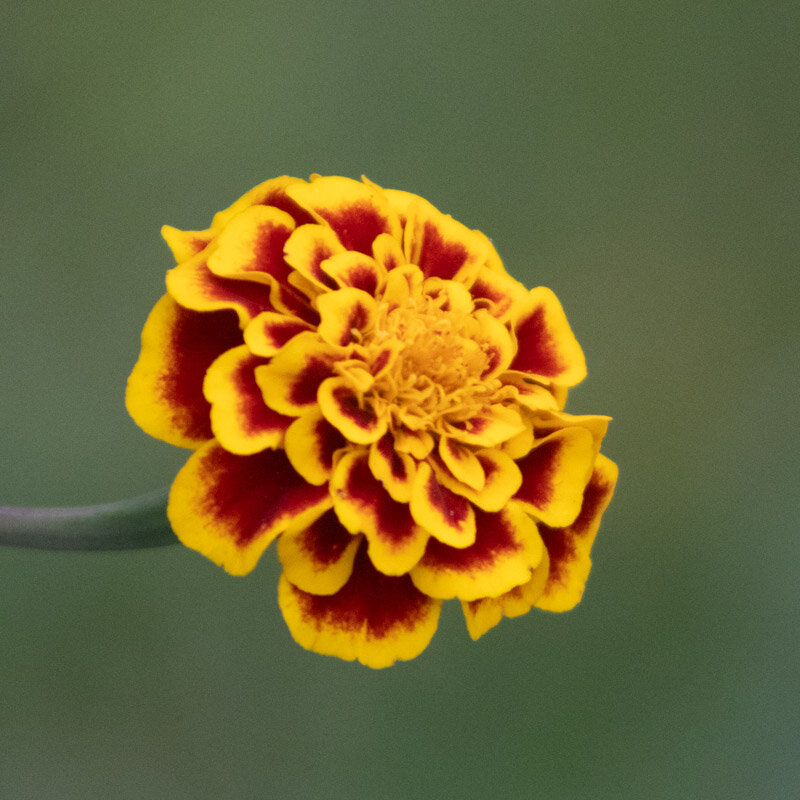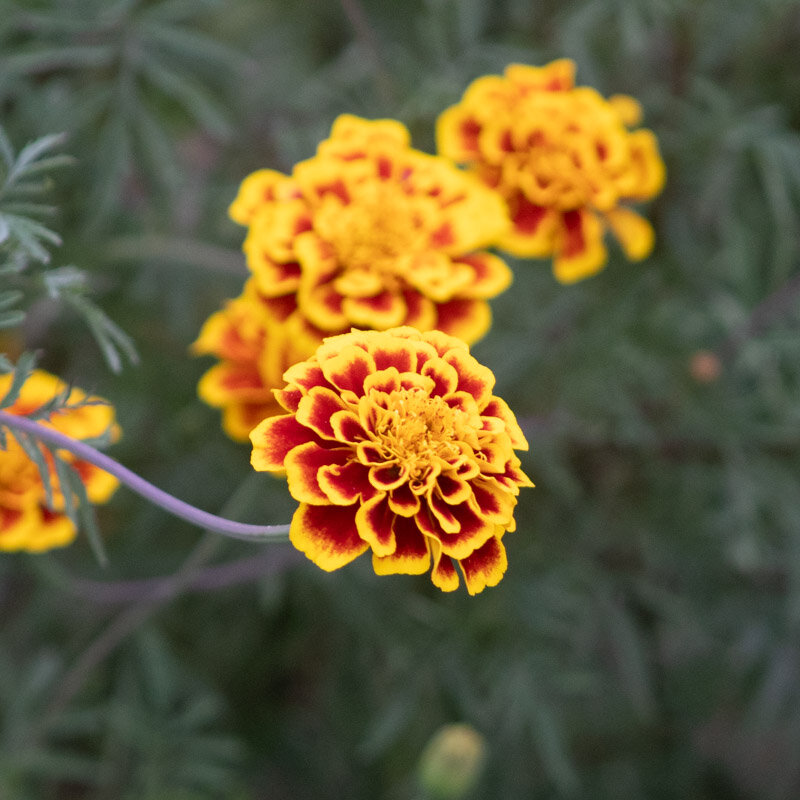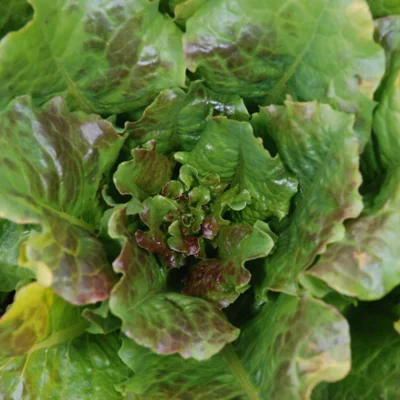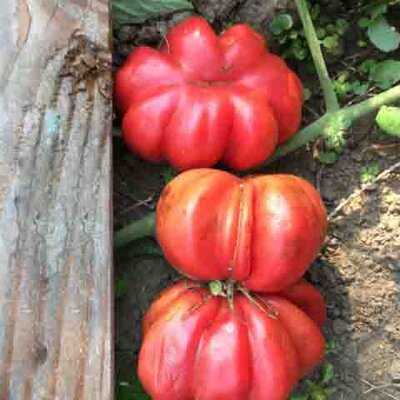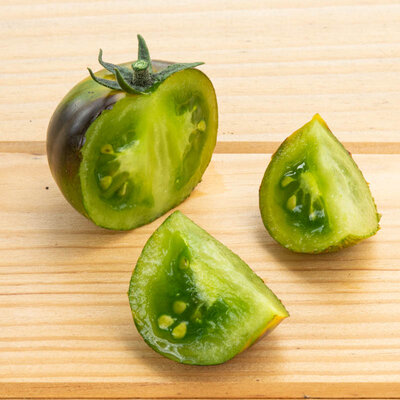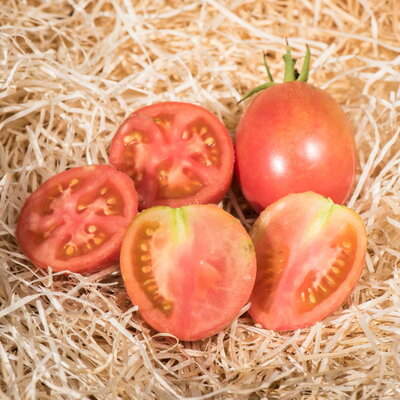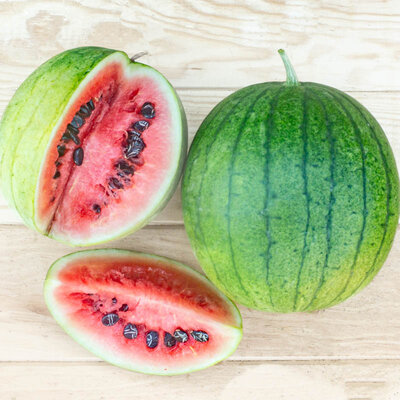Sparkler Marigold - Tagetes
This bushy variety can reach 1.2 m in height, and offers a profusion of magnificent double flowers with red-brown petals edged in golden yellow.
The scent released by the leaves repels certain insect pests such as aphids and attracts other, more useful insects such as butterflies and hoverflies. As for the root, it secretes a substance that is said to have an inhibiting effect on nematodes and whiteflies.
Find out more on the Kokopelli blog: "Carnations and other Dianthus in the Family Pharmacopoeia and Magiacopoeia".
These products may also be of interest to you
in the ground, in bucket
Sow in trays under a light shelter, at a temperature of around 20°C, 4 weeks before planting. Transplant after the last frosts, 15 cm apart in all directions. Alternatively, sow lightly, directly in situ, in sufficiently warmed soil, keeping only the most vigorous plants every 15 cm.
March, April, May
April, May, June
June, July, August, September, October
in the ground, in pot, in the greenhouse
sunny
low
humus, potting soil, clayey, limestone
drained, reheated
Tagetes patula
mid-season
200 seeds
Red, Yellow
fragrance, edible
From 100 to 120 cm
cut
United States
This variety is a creation of Mushroom, Alan Kapuler, in Oregon. In Mexico, where it originated, Tagetes patula is known as "Cempasúchil", "Cempoalxóchitl" in Nahuatl or "flor de muerto" in Spanish. It is currently used for the Christian festival of the dead, which coincides with an ancient Nahuatl festival [39] of great importance, dedicated to the mother of deities, Teteu Inna or Tuci (in "Origen, naturaleza y usos del cempoalxóchitl", Adriana Castro Ramirez).
Alan Kapuler
According to James A. Duke, this species has analgesic, anthelmintic, anti-histaminic, anti-inflammatory, anti-prostaglandin, antiseptic, antiserotoninergic, anti-ulcer, astringent, bactericidal, carminative, diaphoretic properties, diuretic, emmenagogue, fungicidal, hemostatic, hypotensive, insecticidal, larvicidal, nematocidal, pectoral, purgative, stimulant, stomachic, sudorific, vermifuge, vulnerary (in "Duke's Handbook of Medicinal Plants of Latin America". Its anthelmintic and nematocidal activity has been proven against the gastrointestinal nematode Haemonchus contortus and the nematodes Meloidogyne incognita (in cotton), Meloidogyne javanica and Meloidogyne paranaensis (in coffee). Its fungicidal and fortifying properties were highlighted for tomato cultivation by Nahak in 2017, along with its bio-accumulation capacities, i.e. its ability to decontaminate heavy metals such as cadmium. Its insecticidal activity has been proven against the Aedes aegypti mosquito, and in 2015, Kashif et al. demonstrated in the laboratory the use of this species in the treatment of cancers by traditional practitioners by evaluating the antioxidant properties of three Tagetes patula flavonoids, namely patuletin, patulitrin and a protocatechuic acid. The Andean peoples used its dried or fresh root, mixed with Colignonia weberbaueri, as a contraceptive (in "Kallawaya. Itinerant Healers of the Andes". 1984. Louis Girault. Page 465). The author also quotes a passage from an ancient Spanish manuscript which mentions the use of this plant for the treatment of catarrh, wounds, gastric problems, coughs and as a diuretic and emmenagogue plant. See Xochi's article on the Kokopelli blog. Tagetes: medicinal, aphrodisiac and visionary plants.



